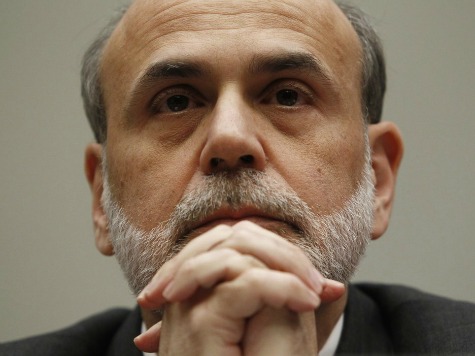GDP growth was revised downward for the first quarter from 2.4 to 1.8 percent because consumer spending, business investment, and exports grew less than previously estimated.
Slack consumer and business spending raise questions about whether household balance sheets have strengthened enough to fuel more robust growth in the second half of 2013 as many forecasters–in particular bank economists who tend to wear rose-colored glasses–are anticipating.
Also, businesses remain wary about the growth of future sales and ObamaCare-associated health care costs. They remain reluctant to invest in new equipment, expand, and hire new employees.
Poorer export performance indicates the manufacturing renaissance continues to be held back by sluggish growth in Europe and protectionism and undervalued currencies in China and Japan. American manufactures lack market opportunities abroad.
Low interests rates–low overnight rates facilitated by Fed Open Market Operations and low long-term rates facilitated by QE3–have: inspired speculators to rush into the housing market, pushing up prices; encouraged students to take on too much debt, portending weaker consumer spending in the future; instigated easy credit terms and high transactions values for auto sales; and pushed up prices for junk bonds and kept many marginal companies in business.
However, if the Fed pulls back: mortgage rates will rise, slowing the housing recovery; student borrowing will slow, raising unemployment among 18-30 year olds and dampening consumer spending; car loans will become tougher and more expensive to get, lowering transactions prices and sale volumes in the auto industry; and lower the prices for junk bonds, causing bankruptcies among weaker businesses.
The Fed is between a rock and a hard place. Obama Administration policies have been anti-growth–for example: the failure to confront China on the yuan; failure to approve more offshore drilling; failure to properly regulate banks, causing both loan shortages for good businesses and too many bad loans for questionable enterprises; health care policies that raise benefits costs and slow hiring; and regulatory overreach elsewhere that stifles manufacturing investment.
This has forced the Fed to carry the ball, but Fed easy money policies are creating distortions in asset markets–for example, elevated prices for agricultural land, homes, stocks and bonds, as well as too many risky derivatives.
If the Fed slows QE3, it risks torpedoing a fragile recovery. If it continues easy money policies, distortions in asset markets continue to grow, and new bubbles will threaten another financial crisis.
Peter Morici is an economist and professor at the Smith School of Business, University of Maryland, and widely published columnist. Follow him on Twitter @pmorici1.

COMMENTS
Please let us know if you're having issues with commenting.